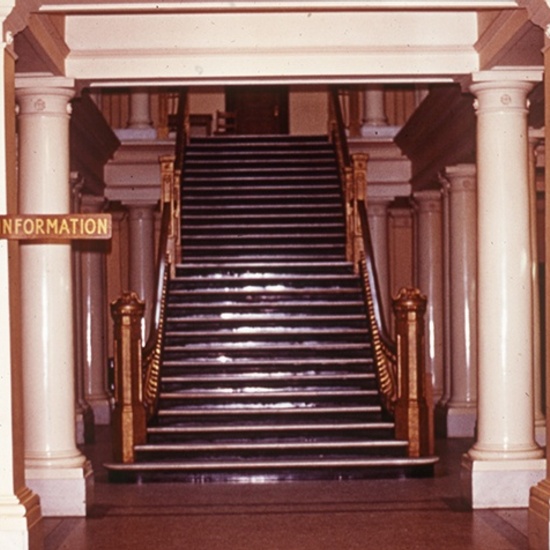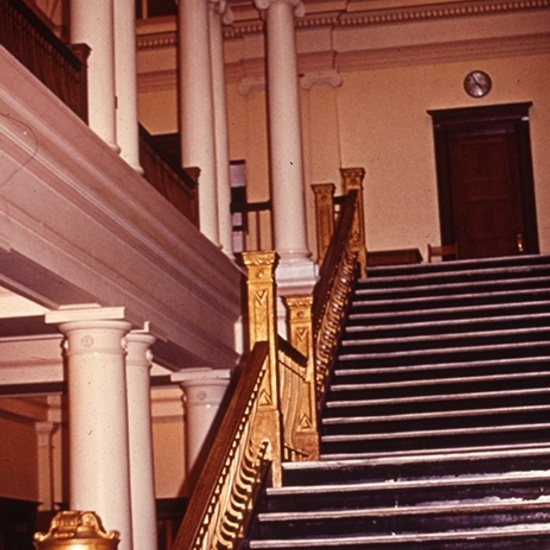Court House
Edmonton's first proper Court House was built in 1912 and demolished in the 1970s.
Edmonton's first proper Court House was built in 1912 and demolished in the 1970s.
Edmonton's old Court House was the first proper courthouse built in the city, finally replacing a number of makeshift and temporary courtrooms in various buildings, including a school house, a hall that also served as a theatre and ballroom, and the upper storeys of a general store and a saloon.
This two-storey masonry structure was designed in the Classic Revival style by architects from the provincial government's Department of Public Works, headed up by Allan Merrick Jeffers. The contract for construction was awarded to contractors Manson and Dunlop. The overall cost over the three years of construction was approximately $250,000. It was completed in 1912.
The imposing new courthouse was clad with Calgary sandstone and had a foundation of British Columbia granite. Unusually for neo-classical design, it featured two entrances of equal importance, due to its location at the intersection of two equally important streets: the entrance on its north façade faced 102 A Avenue while the entrance on the east façade faced 100 Street. Granite steps led to each main entrance, which featured six massive columns twenty-eight feet high and three feet in diameter supporting a stone pediment with the provincial seal carved on the tympanum. The arched doorways had moulded stone architraves, and the original doors were panelled in bronze, although these were later replaced with doors made of oak.
The 100th Street entrance opened onto a large marble rotunda with plaster columns and pilasters supporting a beamed ceiling. The main staircase, which was made of marble and pilaster with ornamental iron railings, was in the centre of the rotunda facing the entrance. An equally ornate gallery ran around the rotunda on the second floor, and the entire effect was completed with a stained glass skylight.
In 1952, the land titles building beside the courthouse was demolished to make way for a $700,000 addition to the courthouse. When it was completed in 1955, doubled the size of the courthouse and increased the number of courtrooms from four to nine. The new addition, designed by architect Neil C. McKernan, used sandstone salvaged from the land titles building and the demolished wall of the existing courthouse as cladding in order to provide continuity on the exterior, but the modern design of the addition, austere with virutally no decoration, contrasted sharply with the older neo-classical section.
By the late 1960s it became evident that even with the addition, the courthouse was no longer adequate to serve the needs of the city, and a new courthouse was built in 1972. The old courthouse was sold to Woodward's, who demolished it to make way for their new downtown store.
Details
Type
Governmental
Designation Status
Demolished
Neighbourhood
Time Period
Year Built
1912
Architects
Architectural Styles
Character Defining Elements
Architrave , Columns , Flat roof , Pediment , Pilaster , Plinth , Portico , Rectangular footprint , Stone structure , Two storeys



